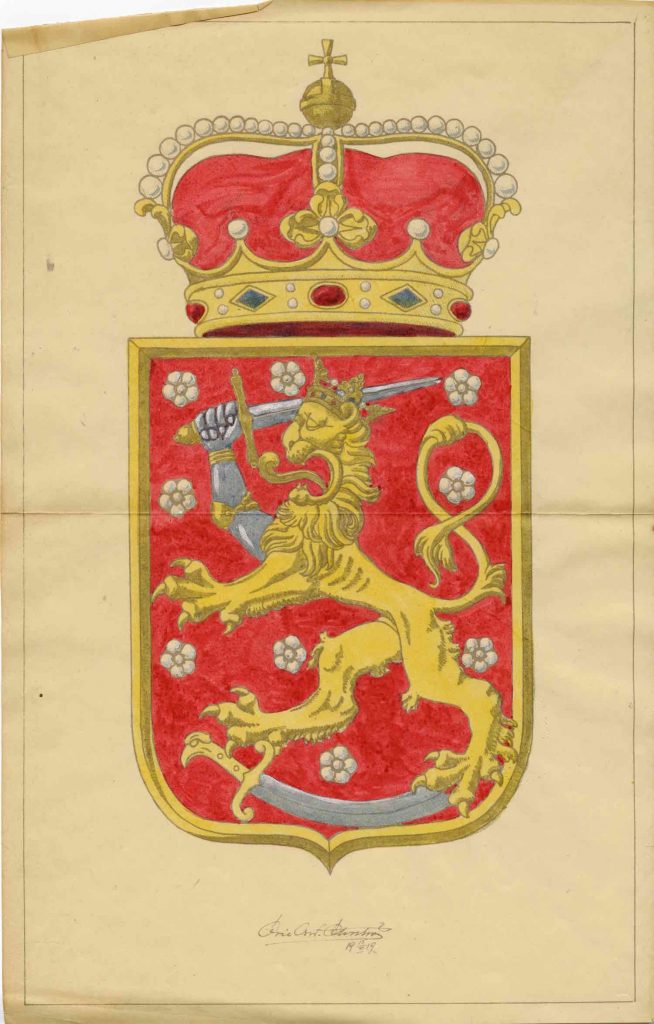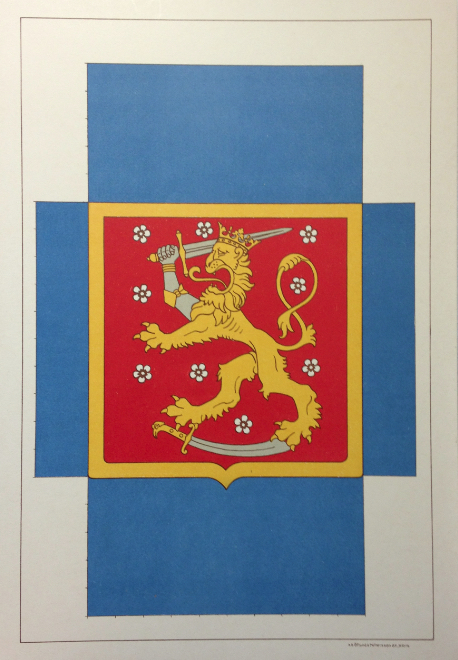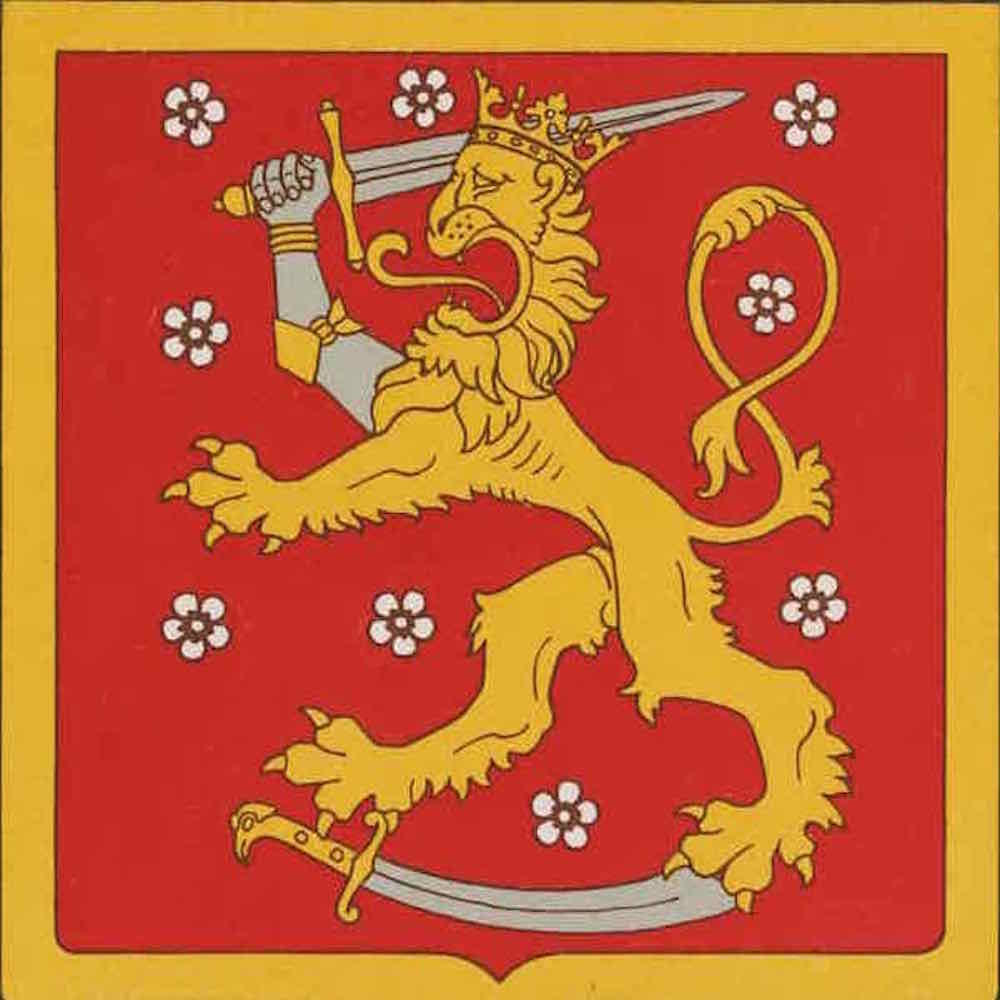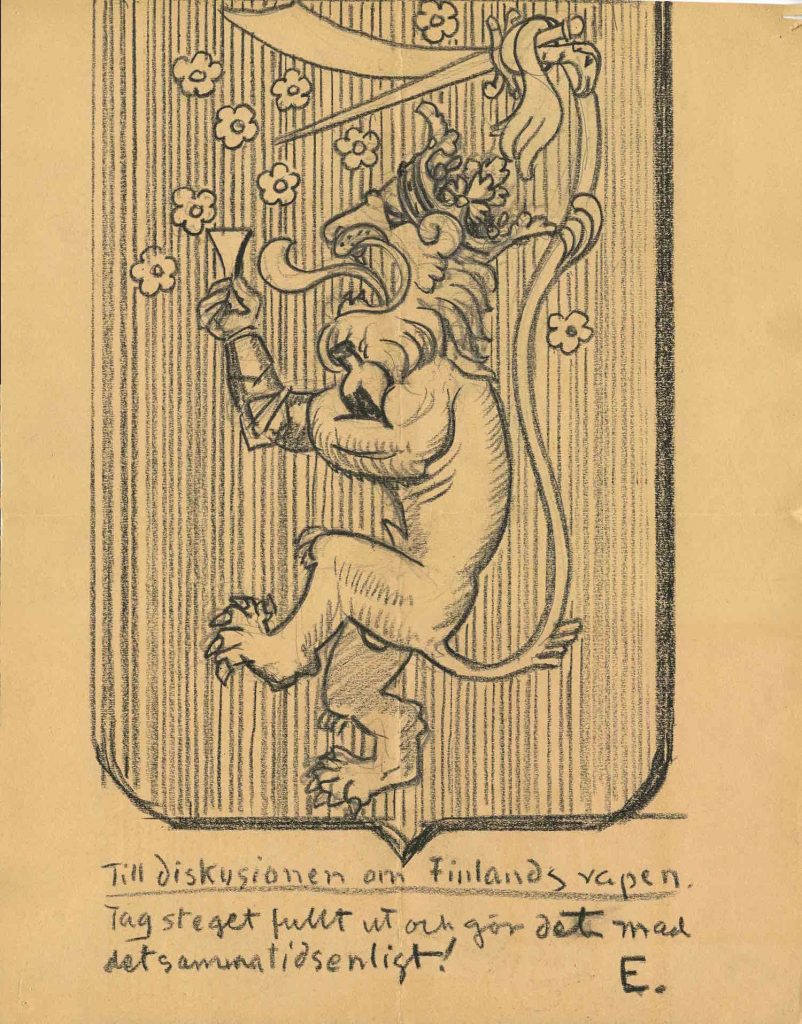Artist Eric O.W. Ehrström and the emblems of the state
JANUARY 2017
When Finnish Parliament declared the country independent on 6 January 1917, the form of government created no discussion. The in spring 1917 set up Committee on Constitutional Affairs, in which all political parties had their representation, had unanimously backed the republic. After the civil war, people started to doubt whether the nation was mature enough for democracy and republican constitution. Constitutional monarchy attracted a strong support.
The lively debate and the dispute over the form of government that sparked about in Finland ended up in royalists’ victory. In October 1918 the Hessian prince Friedrich Karl was designated a king of Finland. The capitol city was preparing for the arrival of the king; the festival committee designed decorations of the city and portrait photographs of the king and queen were prepared for the shop windows.
Artist Eric O. W. Ehrström participated in this project as he did in many other projects that needed the involvement of the circles of the art world. He designed the crown for the future king and costumes of his courtiers. The crown was simple and stylish; its materials were gold, platinum, enamel and pearls from Karelia. The German-minded and monarchic government gave way on December, Mannerheim was chosen a regent and Ehrström moved on smoothly to design the emblems of the republic state.
The Parliament laid down an act on Finnish flag 29 May 1918. According to it, Finland’s state flag is made of cloth and rectangular in shape with a sea-blue (ultra-marine) cross against a white background. The cross divides the flag into four rectangular fields of equal height. The coat of arms of Finland is inset in the square formed by the intersecting arms of the cross.
This phase had been preceded by a proposal of the flag committee about a flag made of red material, featuring in the middle the lion of the Finnish coat of arms in golden and white shades. After the civil war a red flag was out the question.
In June 1918 Eric O. W. Ehrström had been chosen as an artist member of the State’s seal committee that updated the seals of the authorities and institutions of the newly independent Finland. Ehrström was able to reform also the seal of the Finnish Senate and he designed the so-called normal shape of Finnish heraldic lion. Its paragon was the oldest known Finnish lion from the 16th-century grave monument of Gustaf Vaasa located in Uppsala cathedral. Ehrström’s normal form became almost a lookalike of its paragon.
Many variations of the theme have been included in the Gösta Serlachius Fine Arts Foundation’s collections. A more creative touch represents a lion with a bottle under its arm and a beaker in its hand. Ehrström writes in his caption under the picture: ”Till diskusionen om Finlands vapen. Tag steget fullt ut och gör det med detsamma tidsenligt!” [On the discussion of Finland’s coat of arms. Put all out and do it straightaway in a timely manner].
Ehrström was an artist member also in the flag committee established in 1919. Its task was to determine the hue of the Finnish flag as well as the shape of the coat of arms of the state flag. Ehrström’s sketches as well as the first approved design had a crown over the coat of arms. It had seemed appropriate in 1918 when the question of kingdom had been discussed. The Council of State, however, decided in early 1920 that a crown did not appear befitting in a flag of Finland’s republic. Ehrström designed the coat of arms of the flag anew. The design was in use until 1978.
Helena Hänninen
Curator
Source:
Hyrsky, Tuomas 1994, Eric O.W. Ehrström’s heraldic output. University of Art and Design Helsinki. Thesis for licentiate degree.





